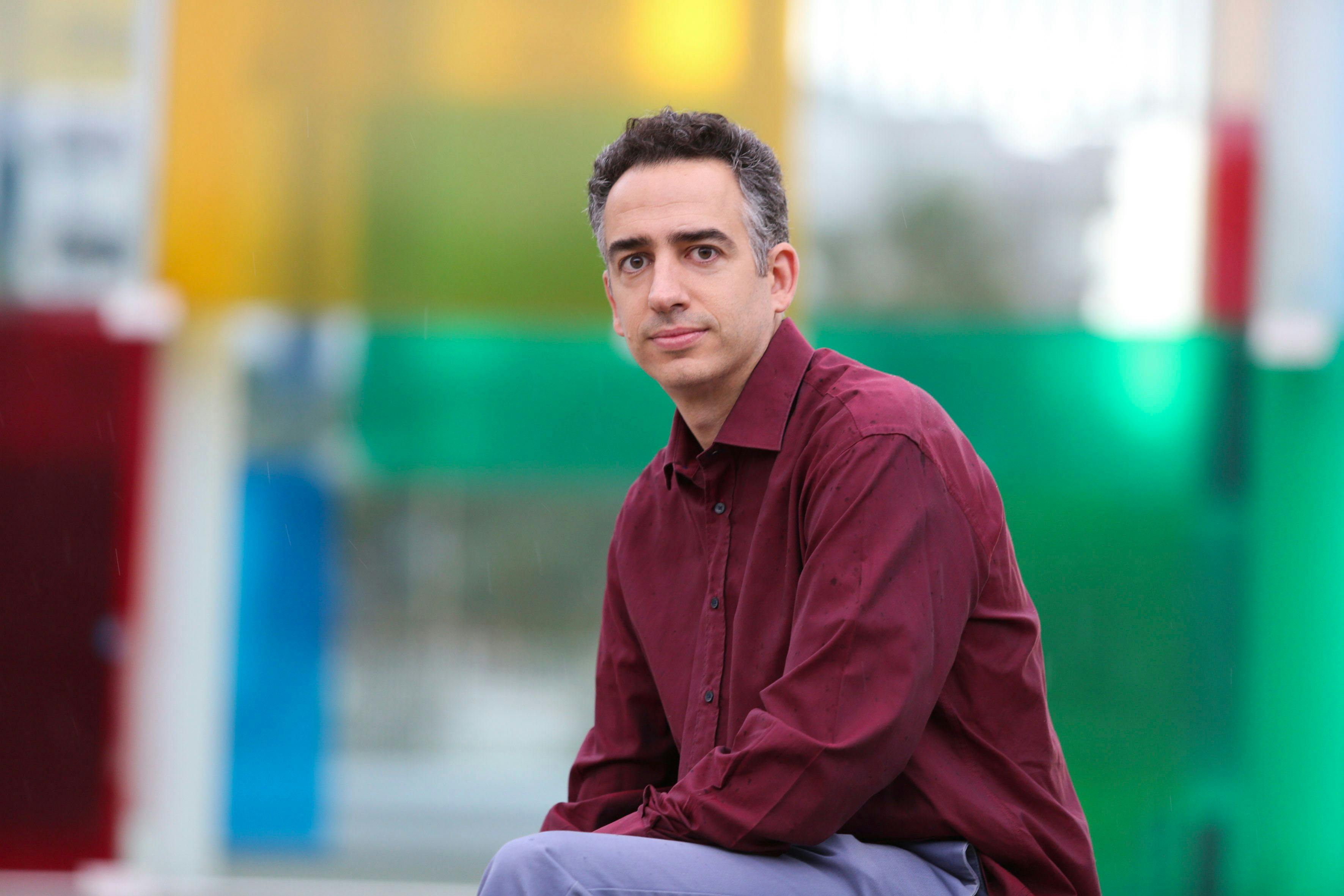
Natasha Myers is an associate professor in the Department of Anthropology at York University and director of the Plant Studies Collaboratory. Her current projects speculate on the contours of a Planthroposcene, with investigations spanning the arts and sciences of vegetal sensing and sentience, the politics of gardens, and the enduring colonial violence of restoration ecology.
[Becoming Sensor](https://becomingsensor.com/)
Andrés Lomeña: Your 'Ten Steps for Life in the Planthroposcene' sounds like a manifesto. You mix politics, science, humanities and art. You propose to reinvent worlds conspiring with the plants. What does it mean? A Green New Deal? Green capitalism? Sustainable agriculture and architecture? Degrowth? More GMOs? Less GMOs?
Natasha Myers: Yes! It is indeed a manifesto. And an incantation of sorts. It aims to cast a spell to dispel the other spells that keep us in the slumber of this disastrous status quo. One of the spells we have fallen under is the spell of capitalism: this economic system that makes us dizzy with possibilities for consumption, capture, and extraction; while making invisible all the violences of its productions, including slavery, the dispossession and destruction of Indigenous lands, the poisoning of waters, the choking up of the airs. It goes on and on. The Anthropocene as a concept identifies the power people have in the unmaking of the world; a Planthroposcene, on the other hand, is aspirational: it invites speculation about what would change if people recognized the more-than-human agencies all around us who do know how to grow livable worlds. Planthroposcenes are activations of the radical political potential of the realization that we are not alone. They do this by displacing the Anthropos, that singular figure at the helm of the Anthropocene, who appears so committed to apocalypse. Planthropos, not Anthropos, are the guiding figures for seeding a thriving Planthroposcene: symbiotically conjoined, plant and human form a collective being, a holobiont, one that attests to the involutionary interdependency of plants and people. Planthropos are committed to earthly survival for all (cf. Haraway 1985). Unlike the Anthropocene, which names an epoch, a Planthroposcene is not a time-bound era, but a scene or episteme, a way of doing life. These scenes are both ancient and modern. Indigenous peoples, healers, gardeners, herbalists, farmers, artists, scientists, architects, shaman, and others around the world attest that plants are not mere resources fueling economies, but co-conspirators in the urgent work of healing the ruins left in the wake of capitalism and colonialism.
Many already know that plants are the world-makers we need to heed; they know that plants have terraformed this earth in a way that makes it livable and breathable for everyone else. These people recognize that their futures hinge on the future of plant life. Plants compose the atmosphere; they matter the compost; they cleanse the waters and seed the clouds; they concoct marvelous chemistries and generate abundant nourishment for all other forms of life, not just for humans. They are the substance, substrate, symbol and sign of cultures and economies the world over. They keep everyone clothed, sheltered, nourished, pleasured, medicated, intoxicated, and adorned. Planthroposcenes invite us to imagine what life would be like if people's primary responsibility were to support plant growth everywhere, as a means to ensure that everyone, human and non, thrives.
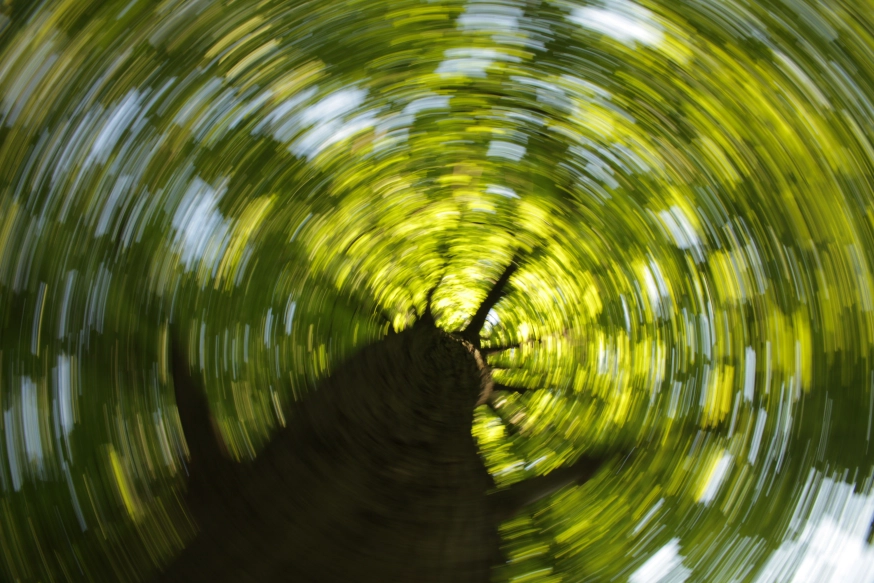
The only New Green Deal that could be viable for a Planthroposcene would be one that hinges on the radical remaking of the meaning of economy, altering entrenched ideas about value, growth productivity, and production. Rather than continuing to model ecology on the tenets of economy -- which has generated such impoverished metrics as "ecosystems services," and makes us see forests as "board feet" of lumber or "carbon sinks" -- economy could be reconfigured by a decolonial ecology, with an attention to relations, collaborations, interdependency, and reciprocity. Green capitalism, with its sustainability rhetoric, and its aestheticized capital-intensive technological fixes, will only further entrench us in ways of doing life that exploit bodies and lands. Planthroposcenes refuse the logics of "sustainability", which in too many contexts means sustaining economic growth. In future Planthroposcenes, "degrowth" will come to mean "livable growth" and will be modeled on the ways that plants grow, including what we could learn from how they conspire with fungi to decompose.
If we thought like a plant, which has to learn how to stick it out, through thick and thin wherever it has taken root, we would pay a lot more attention to what we put in our water, and what we put into the air and into the soil. Our socialities could be inspired by plants' rhizomous rooting and the profound commitments they make to the places they shape and the relations they catalyze all around them. Plants know that whatever feeds the soil is what they in turn will draw up into their tissues. Plants are models for local socialities, modes of life that could, for example, be less vulnerable to global disruptions and to the whims of market forces. Think how much better we would be off in a global pandemic like COVID-19 if we grew our food locally and grounded our lives within local community? These are the practices that could save us as global markets crash and supply chains are disrupted.
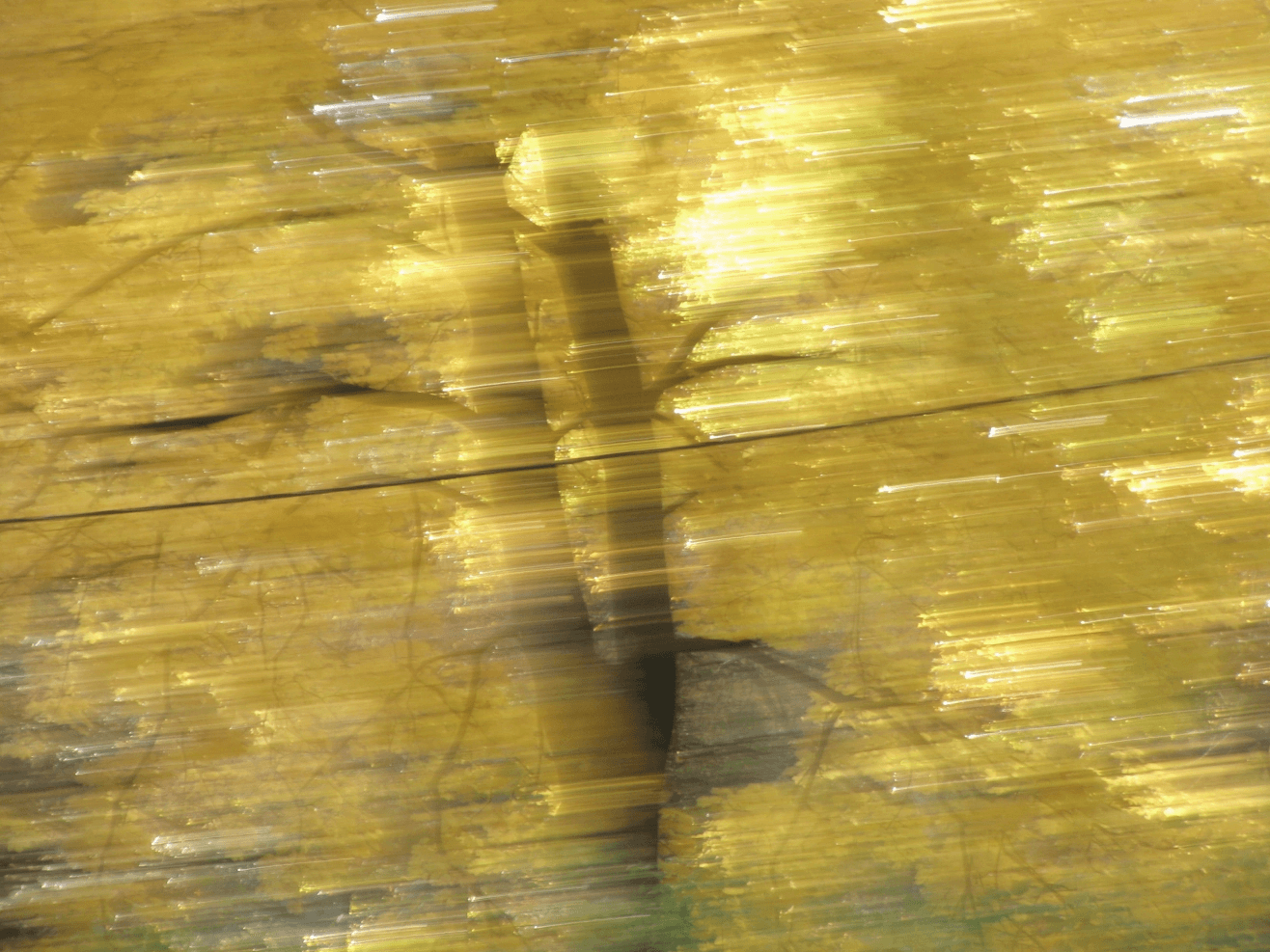
It is cruial to note that Planthroposcenes are rooted in racial justice: they hinge on land-based reparations supporting Black and Indigenous people, making space for Black and Indigenous farmers and earthworkers to reclaim their relations with plants. They are a means to reckon with the violences that white supremacy, slavery, and colonialism have wrought on BIPOC lives in settler states and beyond. Plantations, those deadly sites of enslavement, mass production, ecological ruin, and the source of colonialisms' and capitalisms' enormous wealth would be inconceivable; a Planthroposcene is the counterpose to the Plantationocene. We can learn to garden otherwise. Removing barriers to the solidarities that plants can form with their people is critical in the work of addressing racial injustice. Consider the sheer violence of those laws protecting multi-national corporations that make it illegal in some countries for people to share seeds. Sharing seeds is certainly one way we could become co-conspirators with one another and with the plants.
A.L.: You mention Great Oxidation event. How do you describe the "oxygen revolution"? It was just a catastrophe in terms of biodiversity or it means something else? Is the origin of Planthroposcene?
N.M.: The Anthropocene is conceived as a time bound time-bound era that is made by Man; in this frame humans are conceived as the primary agents of elemental rearrangement terraforming the planet. I like to think about the Great Oxidation---that massive oxygenation of the planet's atmosphere that came with the rise of photosynthetic life a couple of billion years ago---as another example of the ways that living beings make worlds. We can think of this as an epoch made by photosynthetic microbes: in that time green beings were the central agents of elemental rearrangement. If we were to continue to fall into the trap of naming time-bound eras after singular agents, we could consider calling the Great Oxidation the Phytocene. Yes, this planetary transformation was clearly a catastrophe for those organisms who did not breathe oxygen. But those who figured out how to inhale these vapours, thrived, including us. The force and power of photosynthetic creatures in the work of terraforming a planet helps us begin to disrupt the human exceptionalism that grounds so much of our thinking about the Anthropocene. It helps us to appreciate how we humans are actually not autonomous beings; rather, we are of the plants. Indeed: they make our breath possible.
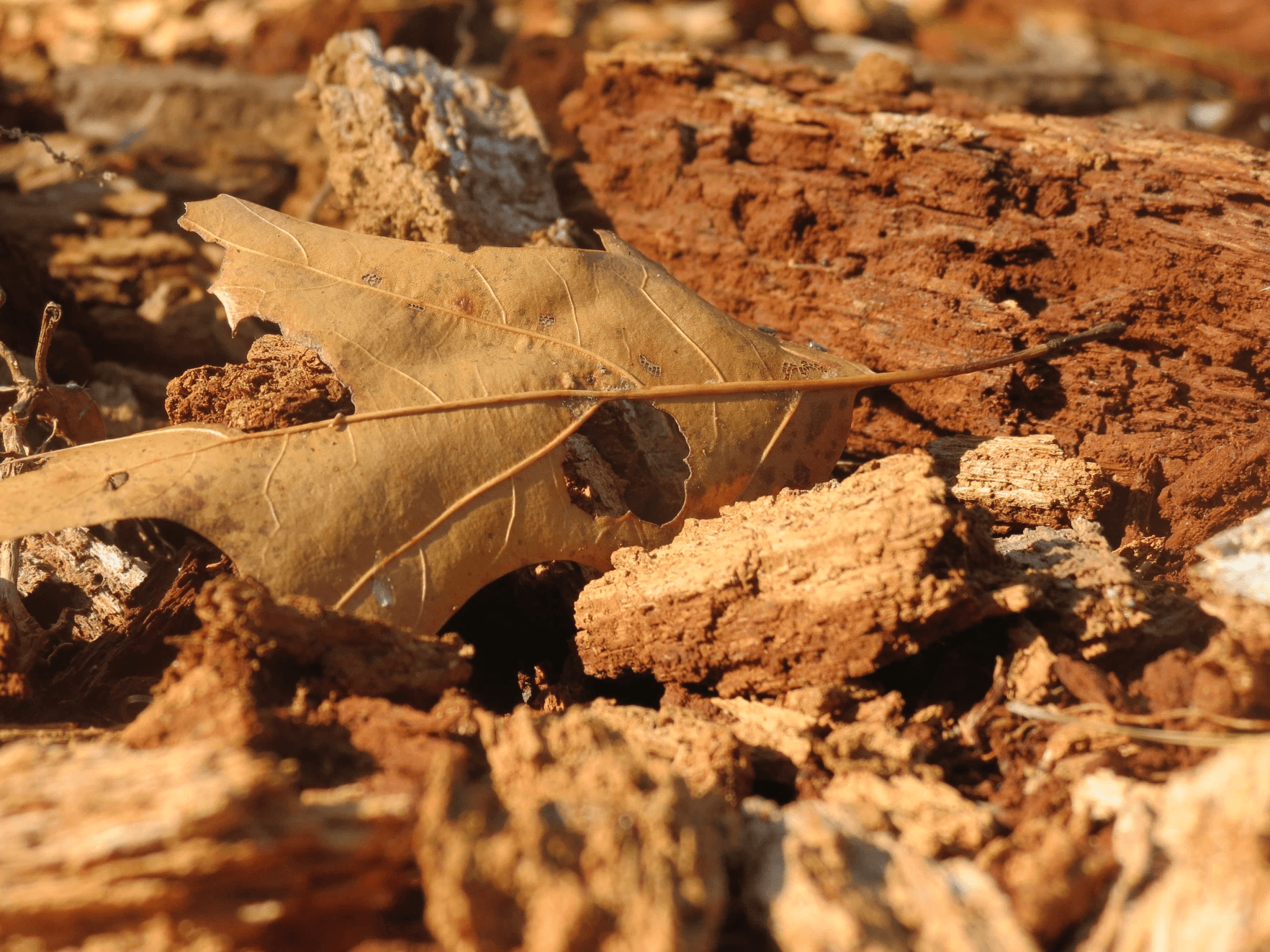
A.L.: David Chamovitz, Stefano Mancuso, and other scientists research "plant intelligence", but I also heard that the book The Secret Life of Plants (1973) is pseudoscience. What do you recommend to us to learn about plants skills?
N.M.: I was a graduate student in plant science in the late-1990s at McGill University and was inspired by research emerging at that time around plant signaling and communication. Plants I was learning then can sense the most minute phenomena. That they can keep time, and anticipate the subtlest shifts in sunlight, daylength, and the seasons, opening their flowers and moving their leaves actively as they forage for light and warmth. They can feel the buzz of an insects' wing and the crunch of an herbivore munching through their leaves. They can even taste the saliva of the particular species of insect feeding on their tissues and mount local and systemic species-specific responses. And they can communicate effectively with other plants and across kingdoms, including with insects. For example, plants can release volatile compounds from their leaves that attract wasps to prey on those who want to eat them. These sensitivities show how plants are active, creative agents, not only sensing and making sense of their worlds, but also making those worlds, and catalyzing larger ecological relations.
In spite of all this exciting research, I find the scientific concept of plant intelligence quite problematic. Our neo-Darwinian models of human and animal intelligence and communication, so indebted as they are to economizing, militarized, and functionalist ways of thinking, are already far too impoverished to be generative for thinking about the remarkable techniques and practices of sensing and forms of sentience among the plants. Moreover, scientific approaches to signaling and communication, which tend to render plants as mechanical automatons running genetically determined programs, don't leave much room for understanding the depth of plants' modes of being and doing.
Rather than looking for signs of "intelligent" life out in the universe, we need a radical reckoning with the more-than-human forms of sentience that surround us and support us here on earth. I prefer the term plant sentience to activate new ways of thinking about the relationship between how plants sense the world, and how they make sense of that world. This is a more capacious term that is not constrained by the limitations of our thinking about "intelligence," and its associated metrics. It resonates with the ideas of French phenomenologist Maurice Merleau-Ponty, who saw a being's capacity for sensing as the promise of its sentience.
This way of thinking allows us to appreciate how plant life is more and other than a struggle for survival and reproduction. Plants are not just incredibly sensitive to the world around them, they are up to stuff: their growth forms and movements are not genetically determined; they are gestural, exploratory, and expressive, and they conduct improvisational experiments with light, gravity and vibration. They are creative too, experimenting with techniques for chemical synthesis. They not only experience the world around them, they actively remake the world through dizzying array of complex and nuanced chemical and physical propositions. While we must be careful with the anthropomorphisms' that limit our capacity to understand plants' ways of doing life by imposing our own impoverished models, we can and should actively and without reservation practice what one scientist I spoke with called "phytomorphism": we should be vegetalizing our own sensoria in order to begin to appreciate plants' lively, expressive, curious, and articulate ways of being. This makes even more sense when we realize that it was the plants who taught us all about taste, smell, colour, texture, and form in the first place. Just look at how our aesthetics and sensory practices are thoroughly tangled up with plant life.
These days I tend to resist giving the stories coming out of the plant sciences the final word on plant life. For deeper understandings of plants, I look to Indigenous knowledge keepers from the region where I live in Toronto, in the Great Lakes region. Anishinaabe, Haudenosaunee, Wendat, and Wyandot concepts and cosmologies have always recognized the intimate interdependency and relationality between plants and people. Indigenous earthworkers are today seeding the plant/people conspiracies that will heal the planet. They treat plants as their relations, their teachers, and their medicines. Anishinaabe artist, activist and writer Leanne Simpson's powerful writing about the teachings of maple trees inspires ways of knowing about plants that are not accessible to science. The Anishinaabe ecologist Robin Wall Kimmerer, who combines Western and Indigenous science, also shares brilliant insights about the interdependence of plants and people. Her widely read Braiding Sweetgrass (2013) is now a New York Times best seller.
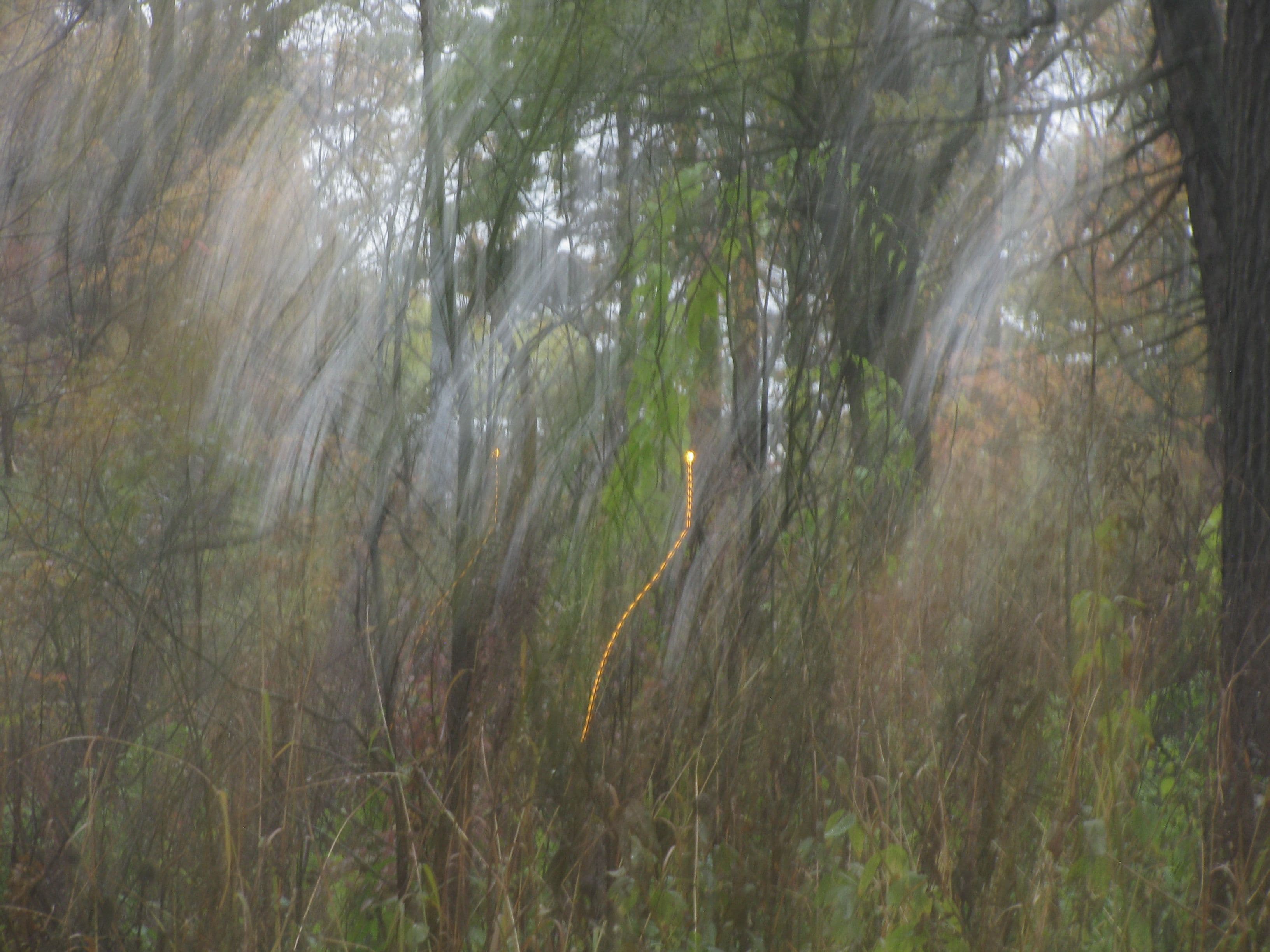
Planthroposcenic research has led me to focus my time and energy learning how to become an ally to Indigenous Elders, knowledge keepers and community leaders in Toronto in their efforts to take leadership in the restoration of their ancient and sacred lands, which lie within the borders of the city's 400-acre pleasure park. My collaborators in the Indigenous Land Stewardship Circle practice gardening as a sacred form of earthwork conducted in ceremony. They understand profoundly how the plants and trees across their lands are holding entire worlds together. Indigenous artists, earthworkers, activists, writers, scientists, and designers the world over are staging solidarities with the plants through their powerful work reclaiming ancestral lands and activating cultural resurgence. And crucially Indigenous protocols for caring for land with fire are what might save us all from the infernos that are currently ravaging Australia, California, and Europe.
So getting back to your question, these are the people who help me see that those who get stuck obsessing about the particular molecular mechanisms and chemistries of plant communication, and arguing about whether this is a form of intelligence or not, are perhaps missing the big picture and the important stories that need to be told and heard now. What matters is what we do with the knowledge of plant sentience: What happens once we all get over the fact that we are surrounded by more-than-human sentiences and live as if the plants are our teachers, giving them the respect they are due? And what changes once we figure out that our future on this planet hinges on us learning how to live as if we are in service of the plants? When we realize that we do indeed have to figure out how to listen to the plants? How will we will stage our relations with them when we realize our responsibilities in ensuring plants' flourishing? We would have to ensure that they had all the land they needed, all the pollinators, all the animal allies, all the water and sunlight and rich earth full of microbes, insects and fungi. This means we need old growth forests, thriving wetlands, cool oceans and healed lands. Ultimately, it is only by caring for the plants and their relatives, that we would be caring for one another and for our collective futures.

A.L.: Ecological alienation has deprived me from knowing about plants and trees. For instance, I probably cannot identify an oak. You propose plant growth. Everywhere. You think that we should not be afraid of invasive species... because you connect native and non-native plants with colonization. Should not I be worried?
N.M.: Stop worrying and get outside and start looking at the plants with fresh eyes! I learned an immense amount from my mentor, the Goethean scientist Margaret Colquhoun in Scotland. Check out her remarkable workbook, New Eyes for Plants (1996). It's time to meet the plants, to learn their names. In these COVID-times, take the time not just to learn the Latin names of the plants "known to science," but the names that the plants have given to their people. If you listen well, you will be able to learn from the plants what they want to be called. In the Planthroposcene I dream about, children will be taught an experiential plant-based home curriculum: "Home Economics" will be replaced by "Home Ecologics," and everyone would learn how to identify local plants, plant and tend a kitchen garden, feed the compost, make healing plant remedies, prepare nourishing foods, make plant-based home detergents and cleansers, spin and weave plant fibers, and engage in barter and exchange economies to share seeds and local knowledge. Inclusive communities would unite to tend cooperative gardens, ensuring all have access to locally grown foods, while stewarding lands to support plants' more-than-human kin.
These tended lands would leave less room for nonnative species to flourish. No plant would be vilified as invasive; what will be called out are the practices that create space for nonnative plants to take root so insistently. These are the colonial and capitalist strategies that dispossess people from their lands and leave these lands in ruins. Nonnative species flourish especially well in the "rubble" of the ruins left by capitalism, colonialism and militarism, and where people have been removed from their lands. Bare earth does not want to be left exposed, and so the plants that can will grow there, unless there is someone to tend it as a wild garden and nurture native species. In a Planthroposcene ecological restoration will come to mean restoring stolen lands to Indigenous people for whom this healing land-based work is a sacred responsibility. For them, this work of healing the land is also a practice of healing community: Leanne Simpson shares insight into how intergenerational land-based teachings help Indigenous communities to rekindle their languages and their laws as they heal from the trauma of colonization.
A.L.: Schopenhauer wrote that the man who is cruel to animals cannot be a good man. I would say the same about plants, but I have to admit that I seldom water my plants. I am horrible as gardener or carer. They do not cry nor shout... and I feel insensitive. Any solution?
N.M.: Ha! If you are feeling insensitive to those potted plants burning in the sun on your windowsill, or drowning in too much water, or drying up because you forgot to water last week, don't worry, I have something for you! Try this "Kriya for Cultivating Your Inner Plant". It will help you awaken your tissues to the lively, sensitive, sensible, and sentient bodies of plants, so that you can extend your imagination to feel out the world alongside them. This is a little meditation that people all over the world have tried out. For some it generates a deep sense of empathy for plants and their particular predicaments. You can do the meditation and ask: What would it feel like to be rooting into contaminated soil? What would it feel like to dry out in a neglected pot in someone's apartment? You will be able to feel them calling out to you and asking for your help! We just have to slow down enough to tune into what they are saying in these very subtle registers. A caring eye entrained to the rhythms of plants would notice a droop in a leaf, or a leaf folding over to protect tender buds from too much sunlight, telling them to water, or to move the plant to the shade. Plant movements can be quite expressive.
I think huge political change is possible with the simple work of learning how to transform how we regard plants and shape our relationships with them. Plants are already at the centre of our economies. Imagine what could happen if we redesigned our worlds to be of service to them? This would require huge political change. As I have come to believe more and more: revolutions can take root in gardens.
A.L.: Richard Power's The Overstory is an ode to forests... but the book is made of wood. Is that a false dilemma?
N.M.: It is nothing short of a travesty that we publish our books and wipe our asses with the last standing trees of our old growth forests. There is a new wave of authors demanding that their books be printed on paper made from agricultural waste: the straw left over from harvesting flax or wheat. I'm working on my Planthroposcenes book right now and am looking for alternatives to printing on trees. The Overstory is a fascinating book, full of stories about people who have been abducted by the plants, but it is a story set in the Anthropocene, where plant-people are effectively swallowed up and destroyed by a world committed to extractive capital. The stories that we need to be reading are those that can activate and help us grow livable worlds: these are the stories being told by BIPOC artists, activists, writers, scholars, gardeners and earthworkers, and their allies. Check out, for example, artist and gardener Christina Battle's collaboration with the South Asian Visual Arts Center in Toronto on ISHTAR's International Network of Feral Gardens. She is among many who are seeding conspiracies with the plants in their gardens, performance spaces, studios, and communities.
